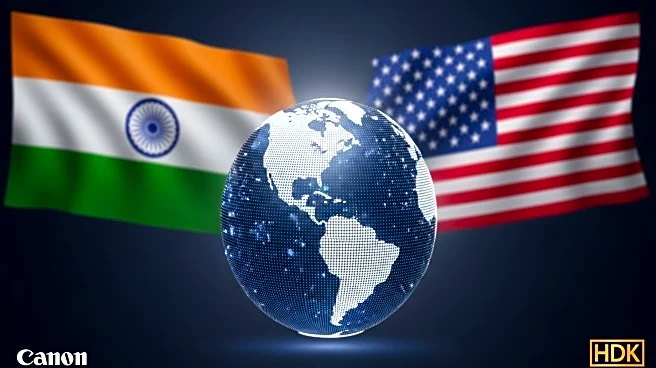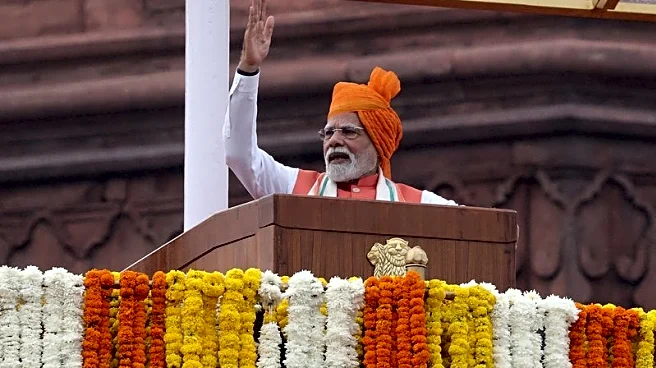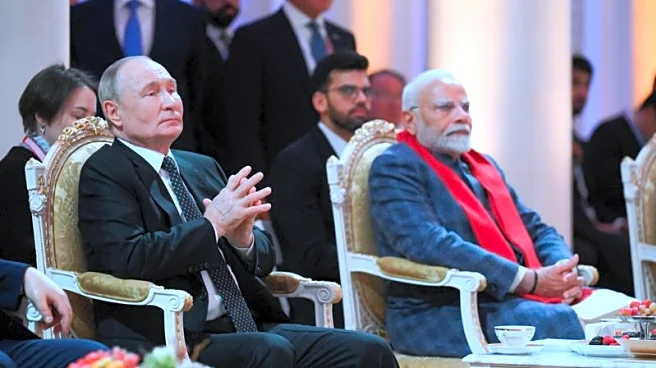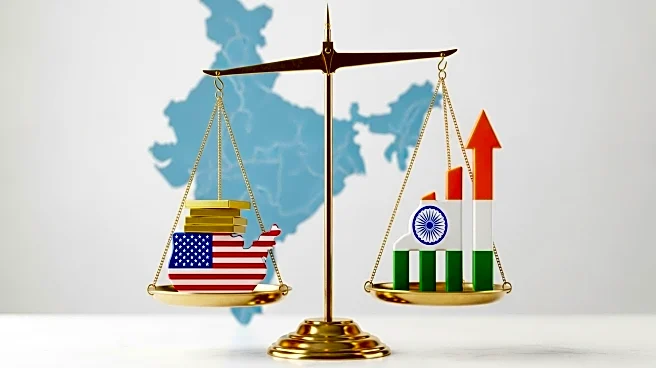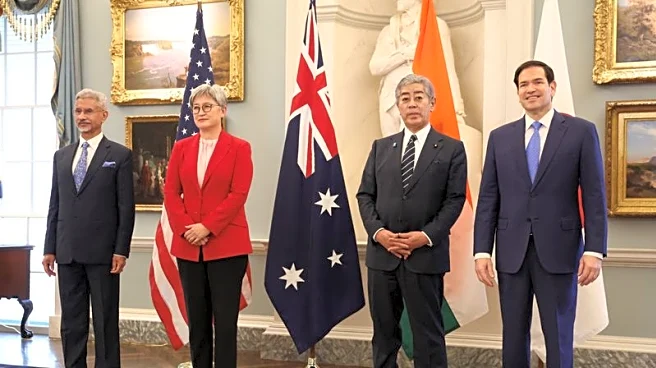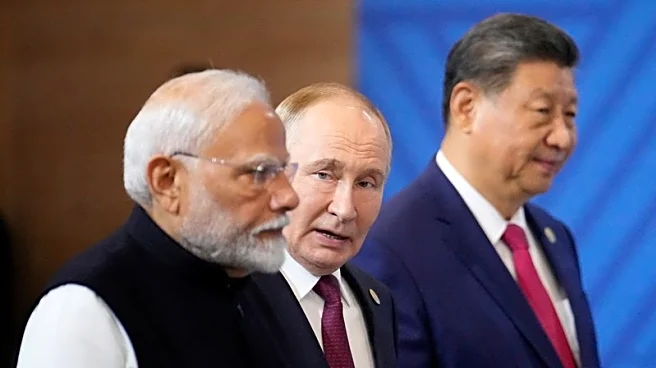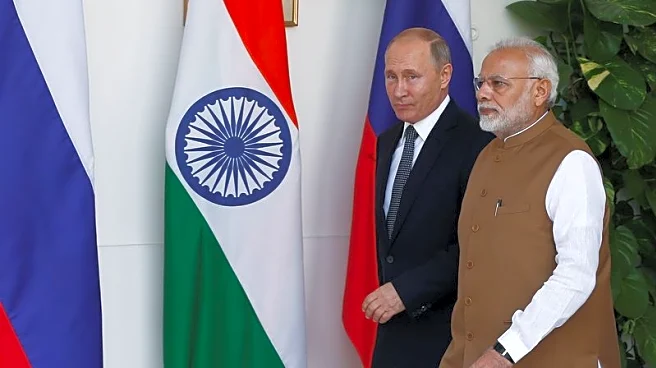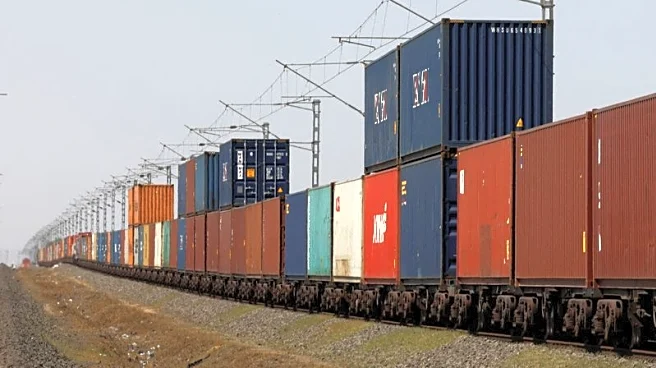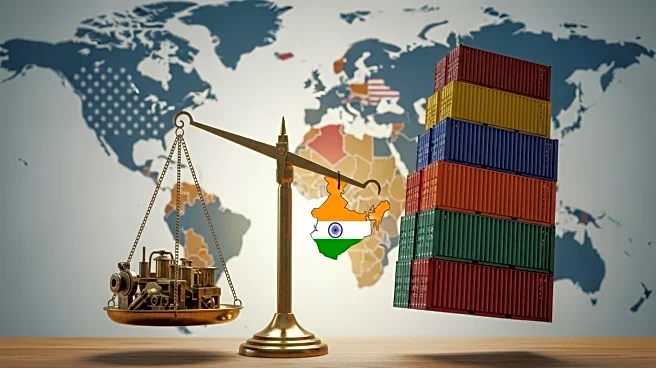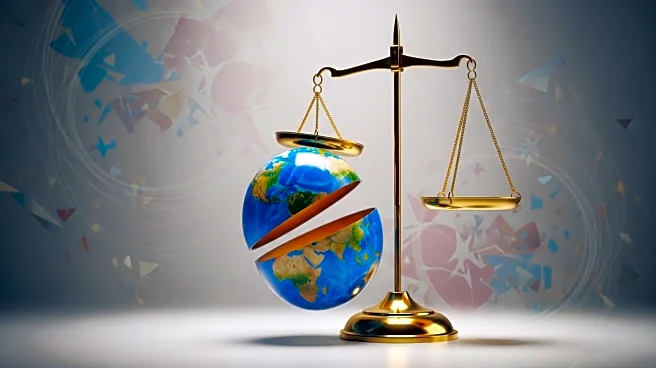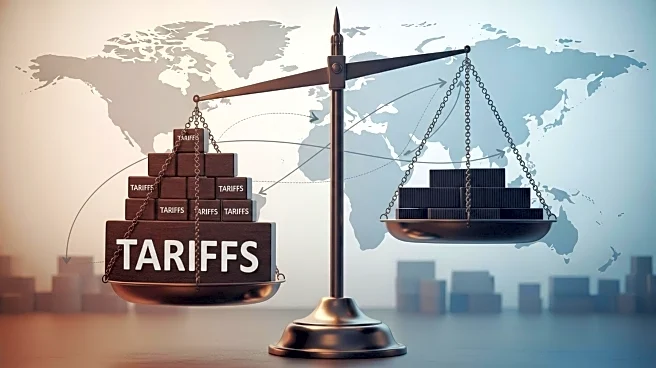What's Happening?
Indian Prime Minister Narendra Modi is set to visit China for the first time in seven years, coinciding with a significant increase in US tariffs on Indian exports. The visit includes meetings with Chinese President Xi Jinping and Russian President Vladimir Putin at a regional security summit in Tianjin. The US recently doubled tariffs on Indian goods to 50%, citing India's continued purchase of Russian oil, which has strained the previously strengthening ties between India and the US. This development has prompted India to seek diversification in its trade relationships, particularly with China, as it aims to stabilize relations and explore new economic opportunities.
Why It's Important?
The tariff increase by the US represents a major economic challenge for India, as the US is its largest export market. The new duties affect approximately $60.2 billion worth of goods, impacting labor-intensive sectors such as textiles and jewelry. This situation has forced India to reconsider its trade strategy and strengthen ties with other nations, including China and Japan. The geopolitical implications are significant, as India seeks to balance its relationships with major global powers while maintaining its economic growth. The visit to China and subsequent meetings with Xi and Putin could signal a shift in India's foreign policy, potentially affecting its long-term strategic alliances.
What's Next?
Prime Minister Modi's visit to China is expected to include discussions on trade and investment, with the possibility of easing tensions between India and China. Additionally, Modi will travel to Japan to meet with Prime Minister Shigeru Ishiba, aiming to deepen defense, technology, and investment ties. This move is part of India's strategy to mitigate the impact of US tariffs by expanding its partnerships with other countries. The outcome of these meetings could influence India's future trade policies and its approach to international relations, particularly in the context of its interactions with the US.
Beyond the Headlines
The current situation highlights the complexities of international trade and diplomacy, as India navigates its relationships with major global powers. The historical mistrust between India and China, particularly regarding their disputed Himalayan border, remains a challenge. However, both nations recognize the potential benefits of stabilizing their relationship amidst a changing world order. The broader implications include shifts in global trade dynamics and the potential for new alliances that could reshape economic and political landscapes.
